

How to Write a Research Paper Introduction (with Examples)

Table of Contents
The research paper introduction section, along with the Title and Abstract, can be considered the face of any research paper. The following article is intended to guide you in organizing and writing the research paper introduction for a quality academic article or dissertation.
The research paper introduction aims to present the topic to the reader. A study will only be accepted for publishing if you can ascertain that the available literature cannot answer your research question. So it is important to ensure that you have read important studies on that particular topic, especially those within the last five to ten years, and that they are properly referenced in this section. 1
What should be included in the research paper introduction is decided by what you want to tell readers about the reason behind the research and how you plan to fill the knowledge gap. The best research paper introduction provides a systemic review of existing work and demonstrates additional work that needs to be done. It needs to be brief, captivating, and well-referenced; a well-drafted research paper introduction will help the researcher win half the battle.
The introduction for a research paper is where you set up your topic and approach for the reader. It has several key goals:
- Present your research topic
- Capture reader interest
- Summarize existing research
- Position your own approach
- Define your specific research problem and problem statement
- Highlight the novelty and contributions of the study
- Give an overview of the paper’s structure
The research paper introduction can vary in size and structure depending on whether your paper presents the results of original empirical research or is a review paper. Some research paper introduction examples are only half a page while others are a few pages long. In many cases, the introduction will be shorter than all of the other sections of your paper; its length depends on the size of your paper as a whole.
What is the introduction for a research paper?
The introduction in a research paper is placed at the beginning to guide the reader from a broad subject area to the specific topic that your research addresses. They present the following information to the reader
- Scope: The topic covered in the research paper
- Context: Background of your topic
- Importance: Why your research matters in that particular area of research and the industry problem that can be targeted

Why is the introduction important in a research paper?
The research paper introduction conveys a lot of information and can be considered an essential roadmap for the rest of your paper. A good introduction for a research paper is important for the following reasons:
- It stimulates your reader’s interest: A good introduction section can make your readers want to read your paper by capturing their interest. It informs the reader what they are going to learn and helps determine if the topic is of interest to them.
- It helps the reader understand the research background: Without a clear introduction, your readers may feel confused and even struggle when reading your paper. A good research paper introduction will prepare them for the in-depth research to come. It provides you the opportunity to engage with the readers and demonstrate your knowledge and authority on the specific topic.
- It explains why your research paper is worth reading: Your introduction can convey a lot of information to your readers. It introduces the topic, why the topic is important, and how you plan to proceed with your research.
- It helps guide the reader through the rest of the paper: The research paper introduction gives the reader a sense of the nature of the information that will support your arguments and the general organization of the paragraphs that will follow.
What are the parts of introduction in the research?
A good research paper introduction section should comprise three main elements: 2
- What is known: This sets the stage for your research. It informs the readers of what is known on the subject.
- What is lacking: This is aimed at justifying the reason for carrying out your research. This could involve investigating a new concept or method or building upon previous research.
- What you aim to do: This part briefly states the objectives of your research and its major contributions. Your detailed hypothesis will also form a part of this section.
How to write a research paper introduction?
The first step in writing the research paper introduction is to inform the reader what your topic is and why it’s interesting or important. This is generally accomplished with a strong opening statement. The second step involves establishing the kinds of research that have been done and ending with limitations or gaps in the research that you intend to address.
Finally, the research paper introduction clarifies how your own research fits in and what problem it addresses. If your research involved testing hypotheses, these should be stated along with your research question. The hypothesis should be presented in the past tense since it will have been tested by the time you are writing the research paper introduction.
The following key points, with examples, can guide you when writing the research paper introduction section:
1. Introduce the research topic:
- Highlight the importance of the research field or topic
- Describe the background of the topic
- Present an overview of current research on the topic
Example: The inclusion of experiential and competency-based learning has benefitted electronics engineering education. Industry partnerships provide an excellent alternative for students wanting to engage in solving real-world challenges. Industry-academia participation has grown in recent years due to the need for skilled engineers with practical training and specialized expertise. However, from the educational perspective, many activities are needed to incorporate sustainable development goals into the university curricula and consolidate learning innovation in universities.
2. Determine a research niche:
- Reveal a gap in existing research or oppose an existing assumption
- Formulate the research question
Example: There have been plausible efforts to integrate educational activities in higher education electronics engineering programs. However, very few studies have considered using educational research methods for performance evaluation of competency-based higher engineering education, with a focus on technical and or transversal skills. To remedy the current need for evaluating competencies in STEM fields and providing sustainable development goals in engineering education, in this study, a comparison was drawn between study groups without and with industry partners.
3. Place your research within the research niche:
- State the purpose of your study
- Highlight the key characteristics of your study
- Describe important results
- Highlight the novelty of the study.
- Offer a brief overview of the structure of the paper.
Example: The study evaluates the main competency needed in the applied electronics course, which is a fundamental core subject for many electronics engineering undergraduate programs. We compared two groups, without and with an industrial partner, that offered real-world projects to solve during the semester. This comparison can help determine significant differences in both groups in terms of developing subject competency and achieving sustainable development goals.

Write a Research Paper Introduction in Minutes with Paperpal
Paperpal is a comprehensive AI academic writing assistant that helps you write 2x faster. Trained on millions of scholarly articles and leveraging over 22 years of STM expertise, Paperpal understands and preserves academic context. This ensures that its language suggestions and AI-generated text not only meets stringent linguistic standards but also aligns with academic writing conventions.
If you’re stuck with writing a research paper introduction, Paperpal’s generative AI features can help you with the starting point and keep your writing momentum going. In this step-by-step guide, we’ll walk you through how Paperpal transforms your initial ideas into a polished and publication-ready introduction.
How to use Paperpal to write the Introduction section
Step 1: Sign up/log in to Paperpal and click on the Templates feature, under this choose Outlines > Research Article .
Step 2: Choose the section of the research article you wish to get an outline for and fill the other details like Field of study, Brief description of study.

Step 3: Based on your inputs, Paperpal generates an outline for your research paper introduction. Check the introduction and personalize it according to your research paper topic.

Step 4: Use this outline and sentence suggestions to develop your content, search for relevant references and cite them in your research paper draft effortlessly with Paperpal.

Step 5: Once your research paper introduction is done, check for grammatical errors with Paperpal’s language checks and prepare it for submission.
You can use the same process to develop each section of your article, and finally your research paper in half the time and without any of the stress.

Start Writing with Paperpal
Key points to remember
Remember the following key points for writing a good research paper introduction: 4
- Avoid stuffing too much general information: Avoid including what an average reader would know and include only that information related to the problem being addressed in the research paper introduction. For example, when describing a comparative study of non-traditional methods for mechanical design optimization, information related to the traditional methods and differences between traditional and non-traditional methods would not be relevant. In this case, the introduction for the research paper should begin with the state-of-the-art non-traditional methods and methods to evaluate the efficiency of newly developed algorithms.
- Avoid packing too many references: Cite only the required works in your research paper introduction. The other works can be included in the discussion section to strengthen your findings.
- Avoid extensive criticism of previous studies: Avoid being overly critical of earlier studies while setting the rationale for your study. A better place for this would be the Discussion section, where you can highlight the advantages of your method.
- Avoid describing conclusions of the study: When writing a research paper introduction remember not to include the findings of your study. The aim is to let the readers know what question is being answered. The actual answer should only be given in the Results and Discussion section.
To summarize, the research paper introduction section should be brief yet informative. It should convince the reader the need to conduct the study and motivate him to read further. If you’re feeling stuck or unsure, choose trusted AI academic writing assistants like Paperpal to effortlessly craft your research paper introduction and other sections of your research article.
Frequently Asked Questions
What is the purpose of the introduction in research papers.
The purpose of the research paper introduction is to introduce the reader to the problem definition, justify the need for the study, and describe the main theme of the study. The aim is to gain the reader’s attention by providing them with necessary background information and establishing the main purpose and direction of the research.
How long should the research paper introduction be?
The length of the research paper introduction can vary across journals and disciplines. While there are no strict word limits for writing the research paper introduction, an ideal length would be one page, with a maximum of 400 words over 1-4 paragraphs. Generally, it is one of the shorter sections of the paper as the reader is assumed to have at least a reasonable knowledge about the topic. 2
For example, for a study evaluating the role of building design in ensuring fire safety, there is no need to discuss definitions and nature of fire in the introduction; you could start by commenting upon the existing practices for fire safety and how your study will add to the existing knowledge and practice.
What should be included in the research paper introduction?
When deciding what to include in the research paper introduction, the rest of the paper should also be considered. The aim is to introduce the reader smoothly to the topic and facilitate an easy read without much dependency on external sources. 3
Below is a list of elements you can include to prepare a research paper introduction outline and follow it when you are writing the research paper introduction.
- Topic introduction: This can include key definitions and a brief history of the topic.
- Research context and background: Offer the readers some general information and then narrow it down to specific aspects.
- Details of the research you conducted: A brief literature review can be included to support your arguments or line of thought.
- Rationale for the study: This establishes the relevance of your study and establishes its importance.
- Importance of your research: The main contributions are highlighted to help establish the novelty of your study
- Research hypothesis: Introduce your research question and propose an expected outcome. Organization of the paper: Include a short paragraph of 3-4 sentences that highlights your plan for the entire paper
Should I include citations in the introduction for a research paper?
Cite only works that are most relevant to your topic; as a general rule, you can include one to three. Note that readers want to see evidence of original thinking. So it is better to avoid using too many references as it does not leave much room for your personal standpoint to shine through.
Citations in your research paper introduction support the key points, and the number of citations depend on the subject matter and the point discussed. If the research paper introduction is too long or overflowing with citations, it is better to cite a few review articles rather than the individual articles summarized in the review.
A good point to remember when citing research papers in the introduction section is to include at least one-third of the references in the introduction.
Should I provide a literature review in the research paper introduction?
The literature review plays a significant role in the research paper introduction section. A good literature review accomplishes the following:
- Introduces the topic
- Establishes the study’s significance
- Provides an overview of the relevant literature
- Provides context for the study using literature
- Identifies knowledge gaps
However, remember to avoid making the following mistakes when writing a research paper introduction:
- Do not use studies from the literature review to aggressively support your research
- Avoid direct quoting
- Do not allow literature review to be the focus of this section. Instead, the literature review should only aid in setting a foundation for the manuscript.
- Jawaid, S. A., & Jawaid, M. (2019). How to write introduction and discussion. Saudi Journal of Anaesthesia, 13(Suppl 1), S18.
- Dewan, P., & Gupta, P. (2016). Writing the title, abstract and introduction: Looks matter!. Indian pediatrics, 53, 235-241.
- Cetin, S., & Hackam, D. J. (2005). An approach to the writing of a scientific Manuscript1. Journal of Surgical Research, 128(2), 165-167.
- Bavdekar, S. B. (2015). Writing introduction: Laying the foundations of a research paper. Journal of the Association of Physicians of India, 63(7), 44-6.
Paperpal is a comprehensive AI writing toolkit that helps students and researchers achieve 2x the writing in half the time. It leverages 21+ years of STM experience and insights from millions of research articles to provide in-depth academic writing, language editing, and submission readiness support to help you write better, faster.
Get accurate academic translations, rewriting support, grammar checks, vocabulary suggestions, and generative AI assistance that delivers human precision at machine speed. Try for free or upgrade to Paperpal Prime starting at US$19 a month to access premium features, including consistency, plagiarism, and 30+ submission readiness checks to help you succeed.
Experience the future of academic writing – Sign up to Paperpal and start writing for free!
Related Reads:
- Scientific Writing Style Guides Explained
- Ethical Research Practices For Research with Human Subjects
- 8 Most Effective Ways to Increase Motivation for Thesis Writing
- 6 Tips for Post-Doc Researchers to Take Their Career to the Next Level
Practice vs. Practise: Learn the Difference
Academic paraphrasing: why paperpal’s rewrite should be your first choice , you may also like, what is scispace detailed review of features, pricing,..., what is the significance and use of post-hoc..., how to write a case study in research..., online ai writing tools: cost-efficient help for dissertation..., how to cite in apa format (7th edition):..., how to write your research paper in apa..., how to choose a dissertation topic, how to write a phd research proposal, how to write an academic paragraph (step-by-step guide), research funding basics: what should a grant proposal....
- Privacy Policy

Home » Research Paper Introduction – Writing Guide and Examples
Research Paper Introduction – Writing Guide and Examples
Table of Contents

Research Paper Introduction
The introduction of a research paper serves as the first impression and sets the stage for the rest of the study. It provides background information, introduces the research topic, establishes the purpose of the paper, and guides readers toward the research question or thesis statement. A well-crafted introduction helps readers understand the significance of the study and its broader context, making them eager to read further.
Purpose of a Research Paper Introduction
The main purpose of a research paper introduction is to:
- Present the Research Topic : Define the scope and relevance of the topic.
- Provide Background Information : Offer a brief overview of existing research, theories, or key concepts.
- State the Research Problem : Explain the issue or gap in the literature that the study addresses.
- Highlight the Study’s Significance : Convey why the research matters and its potential impact.
- Outline the Research Objectives or Questions : Indicate the specific goals or questions guiding the study.
- Conclude with a Thesis Statement : Summarize the main argument or position the paper will take.
Example : For a research paper on the effects of remote work on employee productivity, the introduction could outline the growing popularity of remote work, discuss previous findings on productivity in traditional office settings, and present a research question exploring the impact of remote work environments.
Key Elements of a Research Paper Introduction
To write an effective introduction, include the following elements:
1. Opening Hook
The opening hook is a compelling sentence that captures the reader’s attention. It could be an interesting fact, statistic, anecdote, or quote that draws readers into the topic.
Example : “In 2020, over 42% of the U.S. workforce transitioned to remote work, a shift that redefined traditional notions of productivity and work-life balance.”
2. Background Information
Provide context by discussing the topic, relevant concepts, and any key studies. This section should briefly address what is already known about the topic and why it matters, setting the stage for your research problem.
Example : “Remote work has been a growing trend in the modern workplace, with numerous studies examining its effects on employee satisfaction, work-life balance, and overall productivity.”
3. Research Problem or Gap
Identify the specific research problem or gap that the study addresses. Highlighting this gap shows readers what remains unexplored or unresolved within the topic.
Example : “While previous research has focused on remote work’s impact on job satisfaction, little is known about how it directly influences productivity metrics compared to traditional office settings.”
4. Purpose and Significance of the Study
Explain why the research is important and how it contributes to existing knowledge. State the potential benefits, applications, or implications of your findings.
Example : “Understanding how remote work impacts productivity can help businesses develop strategies to optimize employee performance in virtual environments.”
5. Research Objectives or Questions
Specify the objectives or main research questions guiding the study. These should be concise and directly related to the research problem.
Example : “This study aims to investigate how remote work environments affect productivity and whether these effects vary across different industries.”
6. Thesis Statement or Hypothesis
Conclude the introduction with a clear thesis statement or hypothesis that reflects the study’s main argument or anticipated findings.
Example : “The paper hypothesizes that remote work positively affects productivity levels among employees, particularly in technology-driven fields.”
Step-by-Step Guide to Writing a Research Paper Introduction
Step 1: start with a hook.
Begin your introduction with a hook that captures the reader’s attention. Use a surprising fact, an intriguing statistic, or a thought-provoking question to set the tone.
Example : “As digital technologies continue to evolve, remote work has become more accessible, transforming the traditional office into a virtual workspace.”
Step 2: Provide Background Information
Build on the hook by offering essential context for the topic. Discuss the main concepts, relevant literature, or trends, and introduce any foundational theories or studies that relate to your research.
Example : “Over the past decade, remote work has become an increasingly popular option, driven by advancements in communication technologies and shifts in work culture.”
Step 3: Define the Research Problem or Gap
Clearly state the research problem, emphasizing the specific gap in the existing literature that your study addresses. This step is critical for justifying your study’s relevance.
Example : “Despite extensive research on employee productivity, few studies have examined the impact of remote work environments compared to traditional office settings.”
Step 4: Explain the Study’s Significance
Describe why the study is important and its potential contributions to the field. Explain how it will advance understanding or provide insights that can inform policy, practice, or further research.
Example : “Understanding productivity in remote work environments is essential for companies that seek to optimize performance in a changing work landscape.”
Step 5: Outline the Research Objectives or Questions
List the main objectives or research questions that the study seeks to address. These should be directly related to the research problem and specify the study’s focus.
Example : “This paper investigates how remote work affects employee productivity and identifies factors that may influence performance in virtual settings.”
Step 6: End with a Thesis Statement or Hypothesis
Wrap up the introduction with a clear thesis statement or hypothesis that provides a concise summary of the paper’s main argument or expected findings.
Example : “The study hypothesizes that remote work environments enhance productivity due to reduced commute times, flexible schedules, and a more personalized workspace.”
Examples of Research Paper Introductions
Example 1: social media and mental health.
Hook : “With over 3.6 billion people using social media globally, digital interactions are now a significant part of everyday life.”
Background : “While social media platforms provide opportunities for connection, recent studies suggest that excessive use may have negative implications for mental health, particularly among young adults.”
Research Problem : “Despite the prevalence of social media, its impact on mental health remains underexplored, especially concerning anxiety and self-esteem.”
Purpose and Significance : “By examining the relationship between social media use and mental well-being, this study aims to provide insights that can inform healthier digital habits.”
Research Question : “What is the relationship between social media use and levels of anxiety and self-esteem among young adults?”
Thesis Statement : “This paper posits that excessive social media use is associated with higher levels of anxiety and lower self-esteem.”
Example 2: Renewable Energy Adoption
Hook : “As the world grapples with climate change, renewable energy sources offer a sustainable solution for reducing carbon emissions.”
Background : “The shift toward renewable energy has accelerated in recent years, with solar, wind, and hydroelectric power accounting for a growing share of global energy production.”
Research Problem : “However, the adoption of renewable energy varies significantly between developed and developing countries, and factors influencing this disparity are not fully understood.”
Purpose and Significance : “This study examines the barriers to renewable energy adoption in developing countries, identifying key economic, social, and policy challenges.”
Research Question : “What are the primary barriers to renewable energy adoption in developing nations, and how can these be addressed?”
Thesis Statement : “The paper argues that economic constraints and lack of supportive policies are the main obstacles to renewable energy adoption in developing countries.”
Tips for Writing an Effective Research Paper Introduction
- Be Clear and Concise : Avoid unnecessary details. Stick to key points that introduce the topic and set up your study.
- Engage the Reader : Use an interesting hook or fact to draw the reader in and make them curious about your research.
- Provide Relevant Background : Offer just enough context to help readers understand the topic without overwhelming them.
- State the Research Problem : Clearly articulate the issue or gap that your research addresses, as this helps justify the study.
- Write a Strong Thesis Statement : Ensure your thesis statement or hypothesis clearly reflects the main objective of the study.
Common Mistakes to Avoid
- Being Too Vague : Avoid general statements that lack specificity. Clearly define your topic and research problem.
- Providing Too Much Detail : Keep background information brief and to the point; avoid including data or analysis in the introduction.
- Forgetting the Research Problem : Make sure to state the research problem or gap, as it helps readers understand the study’s purpose.
- Weak Thesis Statement : Avoid vague or broad thesis statements. A strong thesis provides a clear direction for the study.
A well-structured introduction is essential for capturing the reader’s attention and setting up the foundation of a research paper. By including a compelling hook, relevant background, a defined research problem, clear objectives, and a concise thesis statement, you can craft an effective introduction that guides readers into your study. Remember to maintain clarity, stay focused, and emphasize the significance of your research.
- Creswell, J. W., & Creswell, J. D. (2018). Research Design: Qualitative, Quantitative, and Mixed Methods Approaches (5th ed.). SAGE Publications.
- Swales, J. M., & Feak, C. B. (2012). Academic Writing for Graduate Students: Essential Tasks and Skills (3rd ed.). University of Michigan Press.
- Silvia, P. J. (2007). How to Write a Lot: A Practical Guide to Productive Academic Writing . American Psychological Association.
- Swales, J., & Feak, C. B. (2000). English in Today’s Research World: A Writing Guide . University of Michigan Press.
- Booth, W. C., Colomb, G. G., & Williams, J. M. (2008). The Craft of Research (3rd ed.). University of Chicago Press.
About the author
Muhammad Hassan
Researcher, Academic Writer, Web developer
You may also like

Research Design – Types, Methods and Examples

How to Publish a Research Paper – Step by Step...

Tables in Research Paper – Types, Creating Guide...

Implications in Research – Types, Examples and...

APA Research Paper Format – Example, Sample and...

Delimitations in Research – Types, Examples and...

Research Blog
How to write a research paper introduction (with examples).

I hope you enjoy reading this blog post.
If you would like to learn more about research, check out this Research Course .
Welcome to our comprehensive guide on crafting the perfect introduction for your research paper. In this blog, we’ll explore the crucial elements of a strong introduction, highlight common pitfalls to avoid, and provide practical tips to effectively set the stage for your study’s objectives and significance.
Table of Contents
Lack of a clear thesis statement, lack of clear objectives and scope, failure to establish the research significance, insufficient background information, inadequate literature review, ignoring the research gap, overly technical language, poor organization and flow, neglecting the audience, the importance of a good introduction.
A strong introduction sets the tone for the entire paper, guiding the reader through the research journey. It provides context, establishes relevance, and ensures the reader understands the importance of the study.
Starting a research project is exciting, but getting the introduction right is key. It’s like opening the door to your study and inviting readers in. However, there are some common missteps that can trip you up along the way.
Find the U.S. Research Position of your dreams!
Common mistakes to avoid.
A thesis statement is the central argument or claim that guides the entire research paper. It is a concise summary of the main point or claim of the paper and is typically found at the end of the introduction. A clear thesis statement helps to focus the research, provide direction, and inform the reader of the paper’s purpose. Expert reviewers may even skip the rest of the introduction (as they are well versed in the topic) and focus only on your thesis statement, so it’s vital to make sure it is perfect!
When a research introduction lacks a clear thesis statement, several issues can arise:
- Ambiguity : Without a clear thesis, the reader may be confused about the paper’s purpose and the main argument. Do not talk in vague terms. Whenever possible, use terminology established in recent literature. Narrow down the key aspects of the association that you are investigating (the study sample, the outcome and predictor measures) as much as possible.
- Lack of Focus : The paper can become unfocused and meander through unrelated topics, making it difficult for the reader to follow the argument. Do not try to have more than 1-2 main aims in a paper. Even if you have done supplementary analysis, it is better to say so in the discussion. As a rule of thumb, try to answer one major question only!
- Weak Argumentation : A well-defined thesis provides a strong foundation for building arguments. Without it, the arguments may appear weak and unsupported.
Let's be more practical:
1- In this paper, I will discuss climate change.
- Problem: This statement is too broad and vague. It does not provide a clear direction or specific argument.
2- This paper argues that climate change, measured by global average temperature change, is primarily driven by human activities, such as deforestation and the burning of fossil fuels, and proposes policy measures to mitigate its impact.(1)
- Strengths: – Specificity : It clearly states that the paper will focus on human activities as the main drivers of climate change. – Argument : It presents a specific claim that the paper will argue. – Direction : It hints at the structure of the paper by mentioning policy measures.
If you would like to learn more about introductions and other aspects of clinical research, check out the Medical Research Course from the Match Guy here .
Powerful Tips:
- Be Specific : Clearly define the main argument or claim. Avoid vague or broad statements.
- Be Concise : Keep the thesis statement concise, ideally one to two sentences.
- Provide Direction : Indicate the structure of the paper by hinting at the main points that will be discussed.
- Revise as Needed : Be prepared to revise the thesis statement as your research progresses and your understanding deepens.
Transform research ideas into published papers!
A clear statement of objectives and scope is crucial in a research paper introduction because it outlines what the study aims to achieve and defines the boundaries within which the research will be conducted.
Example of Lacking Clear Objectives and Scope: This paper examines the impacts of climate change on agriculture.
- Problem : This statement is too broad and vague. It does not specify what aspects of climate change or agriculture will be studied, nor does it define the geographical or temporal scope.
Example with Clear Objectives and Scope: This study aims to investigate the effects of rising temperatures and changing precipitation patterns on crop yields in the Midwest United States from 2000 to 2010. The objectives are to (1) assess the impact of temperature changes on corn and soybean yields, (2) analyze how variations in precipitation affect crop growth, and (3) identify adaptive strategies employed by farmers in the region.(2)
Powerful tips:
- Be Specific : Clearly state what the study aims to achieve and avoid vague or broad statements.
- Identify Key Areas : Outline the main areas or aspects that the research will focus on.
- Set Boundaries : Define the geographical, temporal, and conceptual boundaries of the research.
- List Objectives : Clearly articulate specific research objectives or questions that the study will address.
- Stay Realistic : Ensure that the objectives and scope are achievable within the constraints of the research project.
- Make it flow : Make sure you are not repeating the same concepts as the thesis statement, as these two sections are often presented back-to-back in the final paragraph of the introduction! Remember: the thesis statement is your hypothesis or question, and your objectives are ‘how’ you are going to test your thesis.
Master medical statistics and boost your productivity!
This mistake can result in the research appearing trivial or irrelevant, diminishing its potential impact. When the significance of the research is not well-established, readers may struggle to understand the value of the study and why they should care about it.
Example of Failure to Establish Research Significance: This study investigates the effects of social media usage on sleep patterns among teenagers.
- Problem : The significance of studying social media’s impact on sleep patterns is not explained. The reader may wonder why this research is important or what implications it has.
Example with Established Research Significance: This study investigates the effects of social media usage on sleep patterns among teenagers. Understanding this relationship is crucial because insufficient sleep is linked to numerous health issues, including decreased academic performance, heightened stress levels, and increased risk of mental health problems. With the pervasive use of social media among adolescents, identifying how it impacts sleep can inform strategies for promoting healthier habits and improving overall well-being in this vulnerable age group.(3)
- Link to Broader Issues : Connect the research topic to broader issues or trends that highlight its relevance and importance.
- Explain Practical Implications : Discuss the potential practical applications or benefits of the research findings.
- Address Gaps in Knowledge : Identify gaps in the existing literature that the research aims to fill.
- Highlight Potential Impact : Emphasize the potential impact of the research on the field, society, or specific populations.
- Use Concrete Examples : Provide concrete examples or scenarios to illustrate the significance of the research.
Feeling swamped by the complexities of Systematic Reviews?
Insufficient background information in the introduction of a research paper refers to failing to provide enough context for the reader to understand the research problem and its significance. Background information sets the stage for the research by offering necessary details about the topic, relevant theories, previous studies, and key terms.
This may lead to:
- Reader Confusion : Without adequate context, readers may struggle to understand the research question, its importance, and how it fits into the broader field of study.
- Weak Justification : Insufficient background can undermine the rationale for the research, making it difficult to justify why the study is necessary or valuable.
- Misinterpretation : Lack of context can lead to misinterpretation of the research objectives, methods, and findings.
Example of Insufficient Background Information: In recent years, many researchers have studied the effects of social media on teenagers. This paper explores the relationship between social media use and anxiety among teenagers.
- Problem : This introduction lacks specific details about the previous research, the theoretical framework, and key terms. It does not provide enough context for the reader to understand why the study is important.
Example of Adequate Background Information: Social media platforms have become an integral part of teenagers’ daily lives, with studies showing that 95% of teens have access to a smartphone and 45% are online almost constantly. Previous research has linked excessive social media use to various mental health issues, including anxiety and depression. However, the mechanisms underlying this relationship remain unclear. This paper explores the impact of social media use on anxiety levels among teenagers, focusing on the roles of social comparison and cyberbullying.(4)
If you would like to learn more about manuscript writing, check out the Comprehensive Research Course from the Match Guy here .
- Review Relevant Literature : Summarize key studies and theories related to your topic.
- Provide Context : Explain the broader context of your research problem.
- Define Key Terms : Ensure that any specialized terms or concepts are clearly defined.
- Identify the Research Gap : Highlight what is not yet known or understood about your topic.
- Be Concise : Provide enough information to set the stage without overwhelming the reader with details.
Getting No Replies from Institutions? Don't Stress!
This mistake can occur when the literature review is too brief, lacks depth, omits key studies, or fails to critically analyze previous work. An inadequate literature review can undermine the foundation of the research by failing to provide the necessary context and justification for the study.
Inadequate Literature Review: There has been some research on the relationship between exercise and mental health. This paper will investigate this relationship further.
- Problem : This review is too general and does not provide sufficient detail about the existing research or how it informs the current study.
Example with Adequate Literature Review: Research has consistently shown that regular physical activity has positive effects on mental health. For example, a study by Gujral et al. (2019) demonstrated that aerobic exercise can significantly reduce symptoms of depression and anxiety. Similarly, Smith and Lee (2020) found that strength training also contributes to improved mood and reduced stress levels. However, much of the existing research has focused on adult populations, with relatively few studies examining these effects in adolescents. Additionally, the specific types of exercise that are most beneficial for different mental health outcomes have not been thoroughly investigated. This study aims to explore the effects of various types of exercise on the mental health of high school students, thereby addressing these gaps in the literature.(5-6)
- Be Comprehensive : Review a broad range of studies related to the research topic to provide a thorough context.
- Be Specific : Cite specific studies, including their methodologies, findings, and relevance to the current research.
- Be Critical : Analyze and evaluate the existing research, identifying strengths, weaknesses, and gaps.
- Be Structured : Organize the literature review logically, grouping studies by themes or findings to create a coherent narrative.
- Be Relevant : Focus on the most relevant studies that directly relate to the research question and objectives.
Unlock your research potential with our dynamic course designed for medical students! Built by an experienced researcher with 150+ publications and 3000+ citations!
Ignoring the research gap in a research paper introduction means failing to identify and articulate what specific aspect of the topic has not been explored or adequately addressed in existing literature. The research gap is a critical component because it justifies the necessity and originality of the study. Without highlighting this gap, the research may appear redundant or lacking in significance.
How huge is this mistake?
- Lack of Justification : The study may not appear necessary or relevant, diminishing its perceived value.
- Redundancy : The research may seem to duplicate existing studies, offering no new insights or contributions to the field. Even if you are using methodology similar to previous studies, it is important to note why you are doing so e.g., few studies have used that specific methodology, and you would like to validate it in your sample population!
- Reader Disinterest : Readers may lose interest if they do not see the unique contribution or purpose of the research.
Example of Ignoring the Research Gap: Many studies have examined the effects of exercise on mental health. This paper looks at the relationship between physical activity and depression.
- Problem : This introduction does not specify what aspect of the relationship between physical activity and depression has not been studied, failing to highlight the unique contribution of the research.
Example of Identifying the Research Gap: Numerous studies have demonstrated the general benefits of physical activity on mental health, particularly its role in alleviating symptoms of depression. However, there is limited research on how different types of exercise (e.g., aerobic vs. anaerobic) specifically impact depression levels among various age groups. This study investigates the differential effects of aerobic and anaerobic exercise on depression in young adults, aiming to fill this gap in the literature.(6)
- Conduct a Thorough Literature Review : Understand the current state of research in your field to identify what has been studied and where gaps exist.
- Be Specific : Clearly articulate what specific aspect has not been covered in existing studies.
- Link to Your Study : Explain how your research will address this gap and contribute to the field.
- Use Evidence : Support your identification of the gap with references to previous studies.
- Emphasize Significance : Highlight why filling this gap is important for advancing knowledge or practical applications.
Do Statistical Analysis on your own with confidence in 2 weeks!
Overly technical language refers to the excessive use of jargon, complex terms, and highly specialized language that may be difficult for readers, especially those not familiar with the field, to understand. While technical language is sometimes necessary in academic writing, overusing it in the introduction can create several problems:
- Reader Alienation : Readers may find the text intimidating or inaccessible, leading to disengagement.
- Lack of Clarity : The main points and significance of the research can become obscured by complex terminology.
- Reduced Impact : The research may fail to communicate its importance effectively if readers struggle to understand the introduction.
Example of Overly Technical Language: The present study examines the metacognitive strategies employed by individuals in the domain of second language acquisition, specifically focusing on the interaction between declarative and procedural memory systems in the process of syntactic parsing.
- Problem : This sentence is loaded with jargon (“metacognitive strategies,” “second language acquisition,” “declarative and procedural memory systems,” “syntactic parsing”), which can be overwhelming and confusing for readers not familiar with these terms.
Example with Simplified Language: This study looks at the thinking strategies people use when learning a second language. It focuses on how different types of memory, such as the knowledge of facts and the skills for doing things, help in understanding sentence structures.(7)
- Know Your Audience : Tailor the language to the intended audience, ensuring it is accessible to both specialists and non-specialists.
- Define Term s: When technical terms are necessary, provide clear definitions or explanations.
- Use Analogies : Simplify complex concepts using analogies or examples that are easy to understand.
- Avoid Jargon : Limit the use of jargon and specialized terms, especially in the introduction.
- Seek Feedback : Ask peers or non-experts to read the introduction and provide feedback on clarity and accessibility.
Curious about delving into research but unsure where to begin?
Poor organization and flow in a research paper introduction refer to a lack of logical structure and coherence that makes the introduction difficult to follow. This can occur when ideas are presented in a haphazard manner, transitions between sections are weak or non-existent, and the overall narrative is disjointed. A well-organized introduction should smoothly guide the reader from the general context to the specific objectives of the study.
Example of Poor Organization and Flow: “Climate change affects agriculture in various ways. Many studies have looked at the impact on crop yields. This paper will discuss the economic implications of these changes. Climate models predict increased variability in weather patterns, which will affect water availability. Researchers have found that higher temperatures reduce the growing season for many crops.”
- Problem : The ideas are presented in a scattered manner without clear connections. The mention of economic implications seems out of place, and there are abrupt shifts between topics.
Example with Good Organization and Flow: Climate change poses significant challenges to agriculture by altering weather patterns, impacting crop yields, and affecting water availability. Numerous studies have shown that increased temperatures can shorten the growing season for many crops, leading to reduced yields. Additionally, climate models predict increased variability in weather patterns, which complicates water management for farmers. These changes not only affect food production but also have substantial economic implications for agricultural communities. This paper will examine the economic impacts of climate-induced changes in agriculture, focusing on crop yield variability and water resource management.(1)
- Create an Outline : Before writing, outline the main points you want to cover in the introduction.
- Think in terms of an inverted triangle : Begin broadly to introduce basic concepts related to your topic. As you progress through the introduction, you can introduce more and more specific topics until you have enough information to justify your thesis statement
- Use Transitional Phrases : Employ transitional phrases and sentences to connect ideas and sections smoothly.
- Follow a Logical Sequence : Present information in a logical order, moving from general context to specific objectives.
- Maintain Focus : Stay focused on the main topic and avoid introducing unrelated ideas.
- Revise for Coherence : Review and revise the introduction to ensure that it flows well and that each part contributes to the overall narrative.

Advisor UNLIMITED Access
We get how stressful the residency match process is, so we're here for you - communicate with your personal advisor ANYTIME you need!

Personal Statement Editing
Our editing includes not only language but also context, structure, and content advising.

ERAS Application Editing
The editing goes beyond language and grammar corrections to structure, design, and content based on your personal story and achievement.

- Interview Preparation
The best way to learn something is to do it. That’s why we divide our interview preparation sessions into two parts. Mock Interview + Feedback
Neglecting the audience refers to failing to consider the background, knowledge level, and interests of the intended readers when writing the introduction of a research paper. This mistake can manifest in several ways, such as using overly technical language for a general audience, providing insufficient background information for readers unfamiliar with the topic, or failing to engage the readers’ interest.
Example of Neglecting the Audience: For experts in genomic sequencing, this study explores the epigenetic modifications resulting from CRISPR-Cas9 interventions, focusing on the methylation patterns and histone modifications observed in gene-edited cells.
- Problem : This introduction assumes a high level of expertise in genomic sequencing and epigenetics, which may alienate readers without this background.
Example with Audience Consideration: CRISPR-Cas9 is a groundbreaking tool in genetic research that allows scientists to edit DNA with precision. However, altering genes can lead to unexpected changes in how genes are expressed, known as epigenetic modifications. This study investigates these changes by looking at specific markers on DNA, such as methylation patterns, and how they affect gene activity in cells that have been edited using CRISPR-Cas9. Our goal is to understand the broader implications of gene editing on cellular functions, which is crucial for advancing medical research and treatments.(8)
- Identify the Audience : Determine who the intended readers are (e.g., experts, students, general public) and tailor the language and content accordingly. Read papers from the journals you are considering for submission. Professional editors curate the language used in these papers and are a great starting point to identify the level of expertise of your audience!
- Simplify Language : Use clear and straightforward language, avoiding jargon and technical terms unless they are necessary and well-explained.
- Provide Background Information : Include sufficient background information to help readers understand the context and significance of the research.
- Engage the Reader : Start with an engaging introduction that highlights the relevance and importance of the research topic.
- Anticipate Questions : Consider what questions or concerns the audience might have and address them in the introduction
USMLE Tutoring
By following these guidelines and avoiding common pitfalls, you can create an introduction that not only grabs the attention of your readers but also sets the stage for a compelling and impactful research paper.
Final Tips:
- Revise and refine your introduction multiple times to ensure clarity and coherence.
- Seek feedback from peers, mentors, or advisors to identify areas for improvement.
- Keep your audience in mind and tailor your language and content to their needs and interests.
- Stay focused on your research objectives and ensure that every part of your introduction contributes to achieving them.
- Be confident in the significance of your research and its potential impact on your field or community.
Let your introduction be more than just words on a page. It’s a doorway to understanding. To help you along, we’ve created a practical course on writing and publishing research projects. It’s 100% risk-free, with a money-back guarantee if you’re not satisfied. Try it out now by clicking here .
Wishing you success on your research journey!
Marina Ramzy Mourid, Hamza Ibad, MBBS
Dr. Ibad graduated from the Aga Khan University Medical College and completed a post-doctoral research fellowship at Johns Hopkins in the Department of Radiology (Musculoskeletal Division). Dr. Ibad’s research and clinical interests include deep-learning applications for automated image interpretation, osteoarthritis, and sarcopenia-related health outcomes.

ERAS 2025: What Rising Numbers of Applicants Mean for IMGs


What IMGs Need to Know About Intealth’s New Accreditation Policy

The Pathways for ECFMG Certification for MATCH 2025

2025 ERAS Application Updates
About thematchguy, become a researcher in the united states, interested in learning more about literature search with examples from published literature, the comprehensive research course, the systematic review course, the medical statistics course, how to find research positions in the us.
1. Abbass K, Qasim MZ, Song H, Murshed M, Mahmood H, Younis I. A review of the global climate change impacts, adaptation, and sustainable mitigation measures. Environ Sci Pollut Res. 2022;29(28):42539-42559. doi:10.1007/s11356-022-19718-6
2. Cai X, Wang D, Laurent R. Impact of climate change on crop yield: a case study of rainfed corn in central illinois. Journal of Applied Meteorology and Climatology. 2009;48(9):1868-1881. doi:10.1175/2009JAMC1880.1
3. Van Den Eijnden RJJM, Geurts SM, Ter Bogt TFM, Van Der Rijst VG, Koning IM. Social media use and adolescents’ sleep: a longitudinal study on the protective role of parental rules regarding internet use before sleep. IJERPH. 2021;18(3):1346. doi:10.3390/ijerph18031346
4. Schmitt, M. (2021). Effects of social media and technology on adolescents: What the evidence is showing and what we can do about it. Journal of Family and Consumer Sciences Education, 38(1), 51-59.
5. Gujral S, Aizenstein H, Reynolds CF, Butters MA, Erickson KI. Exercise effects on depression: Possible neural mechanisms. General Hospital Psychiatry. 2017;49:2-10. doi:10.1016/j.genhosppsych.2017.04.012
6. Smith PJ, Merwin RM. The role of exercise in management of mental health disorders: an integrative review. Annu Rev Med. 2021;72(1):45-62. doi:10.1146/annurev-med-060619-022943
7. Sun Q, Zhang LJ. Understanding learners’ metacognitive experiences in learning to write in English as a foreign language: A structural equation modeling approach. Front Psychol. 2022;13:986301. doi:10.3389/fpsyg.2022.986301
8. Kolanu ND. Crispr–cas9 gene editing: curing genetic diseases by inherited epigenetic modifications. Glob Med Genet. 2024;11(01):113-122. doi:10.1055/s-0044-1785234
How can we help you?
Leave your message here and we will get in touch with you as soon as possible.

Quick Links
- Our Reviews
- Our Podcast
- Residency Advising
- Personal Statement
- Match®Application Package
- P.O. Box 40388 Pittsburgh, PA 15201
- [email protected]
- + 1 412-287-0536
- Privacy Policy
- Terms & Conditions
WhatsApp Us

Join Over 20,000 Readers

Research Paper Introduction
Ai generator.
The introduction of a research paper is a critical component that sets the tone for the entire study. It serves as the gateway for readers to delve into the research topic, understand its significance, and grasp the context of the study. A well-crafted introduction captures the attention of readers, provides a clear overview of the research, and sets the stage for the subsequent sections. In this article, we will explore what makes an effective research paper introduction, provide a step-by-step guide on how to write one, address frequently asked questions, and conclude with a touch of creativity.
1. Research Paper Template

- Google Docs
- Apple Pages
2. Research Paper Format
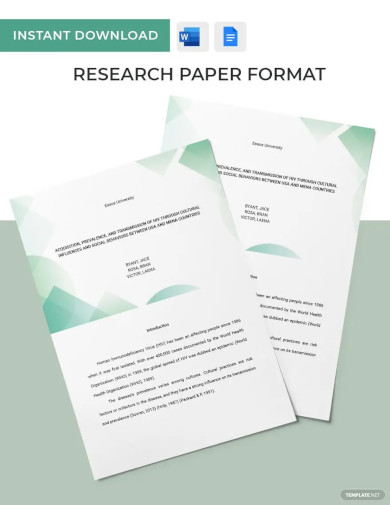
3. Research Paper Outline Template
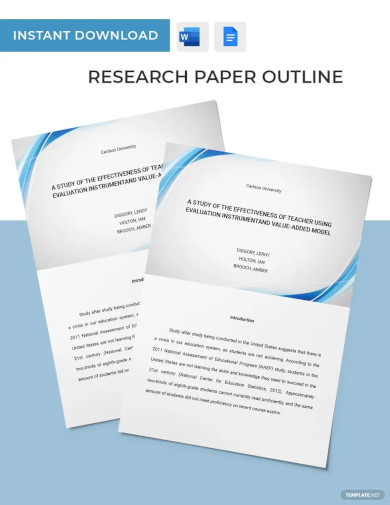
4. Research Paper Review Template
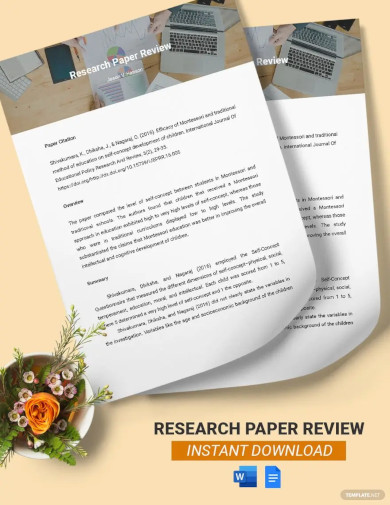
5. Writing Research Paper Introductions
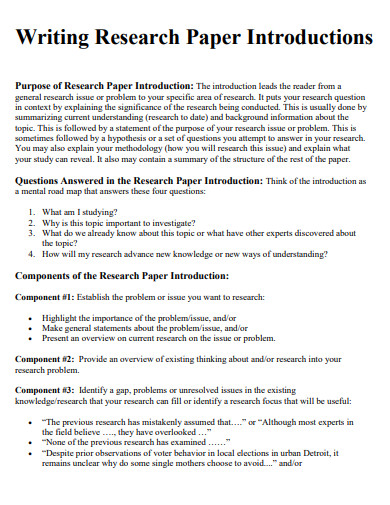
Size: 84 KB
6. Research Paper Introduction Paragraph
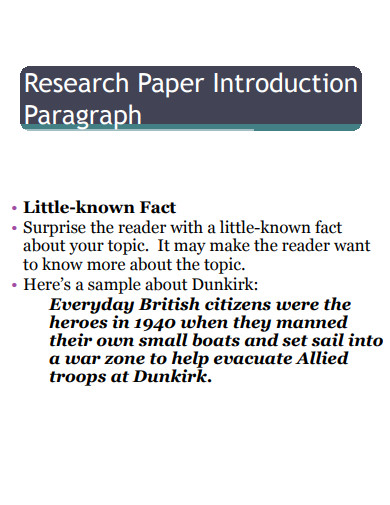
Size: 126 KB
7. Research Paper Introduction Example
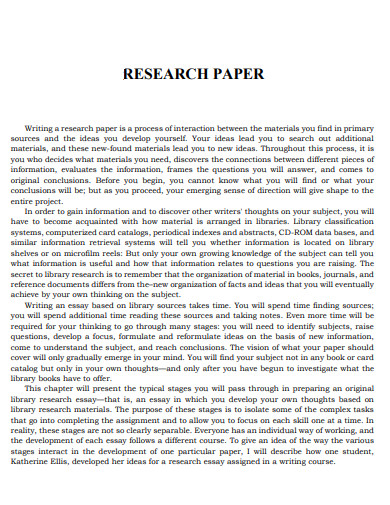
Size: 842 KB
8. Linear Equations Research Paper Introduction
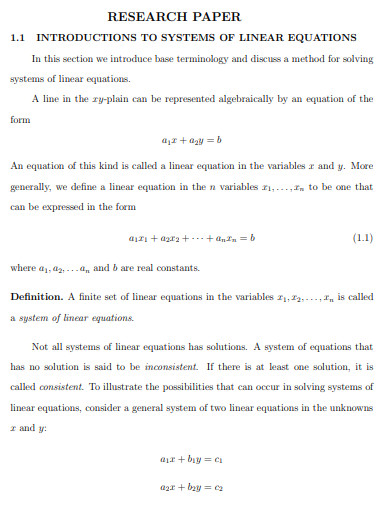
9. Organization Research Paper Introduction
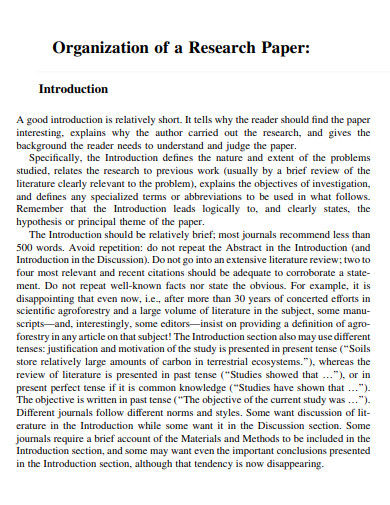
Size: 161 KB
10. Argument Research Paper Introduction
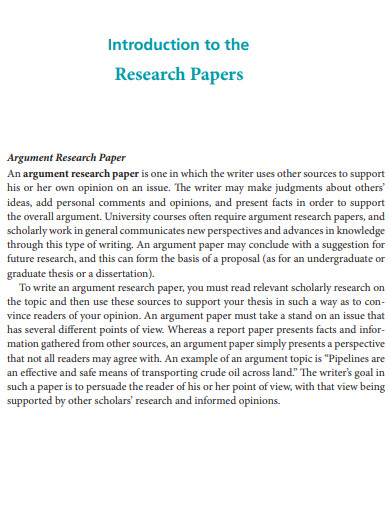
11. Introduction Section for Research Papers
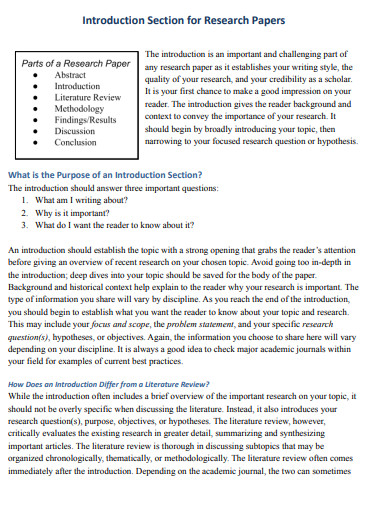
12. Sample Introduction Research Papers
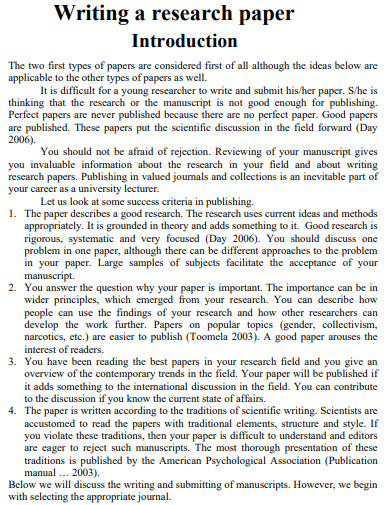
Size: 54 KB
13. Simple Introduction Research Papers
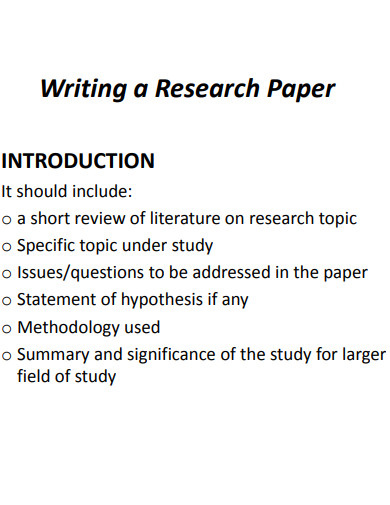
Size: 668 KB
14. Introduction Scientific Research Papers
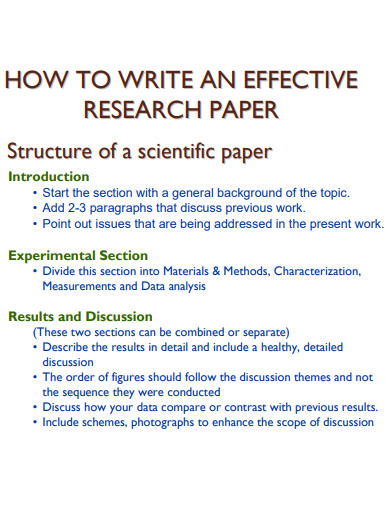
Size: 417 KB
15. Basic Research Papers Introduction
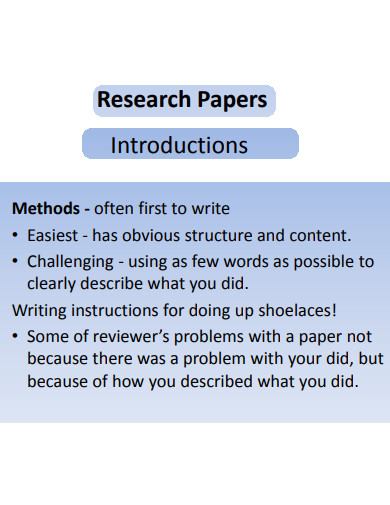
16. Economics Research Papers Introduction
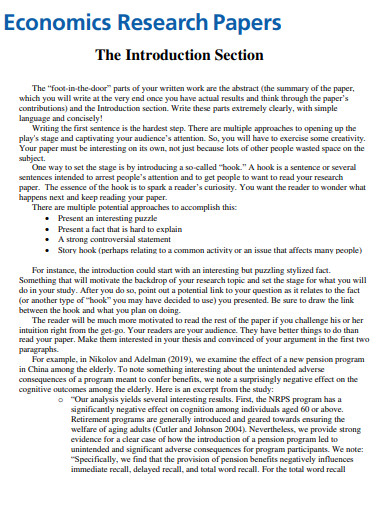
Size: 283 KB
17. Research Paper Proposal Introduction
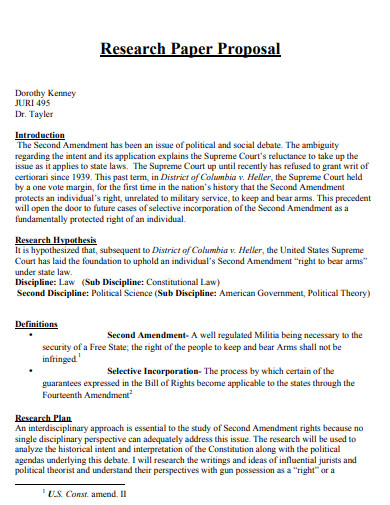
Size: 184 KB
18. Literature Review Research Paper Introduction
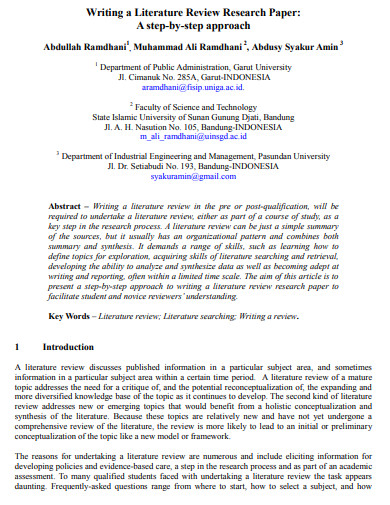
Size: 363 KB
19. General Research Paper Introduction

20. Standard Research Paper Introduction
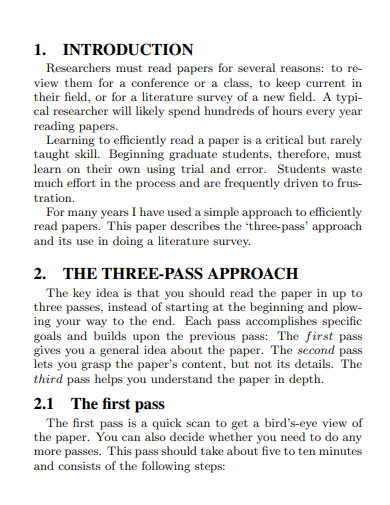
21. Steps for Research Paper Introduction
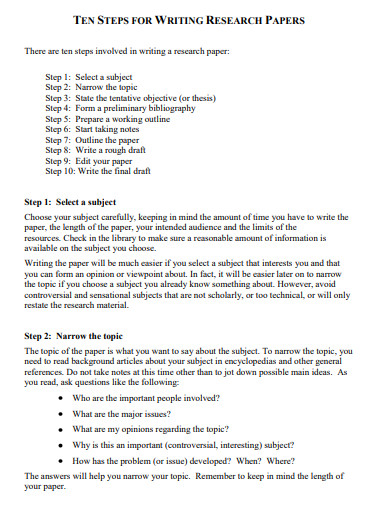
Size: 108 KB
22. Good Research Paper Introduction
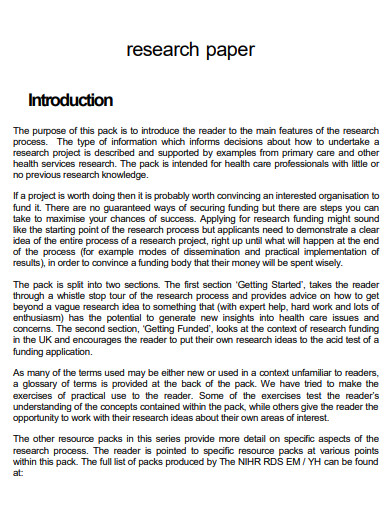
Size: 160 KB
23. Research Paper Introduction Outline
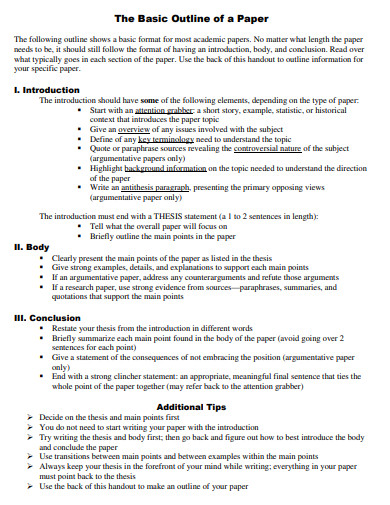
Size: 24 KB
24. Printable Research Paper Introduction
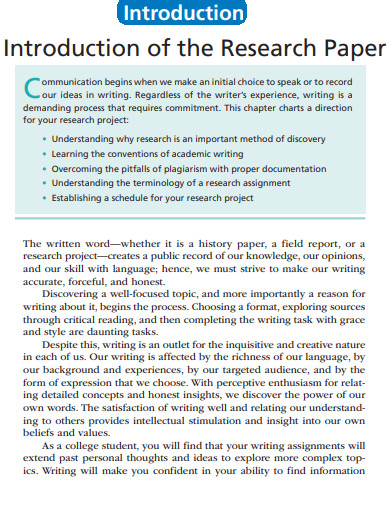
Size: 11 MB
25. Formatting Research Paper Introduction
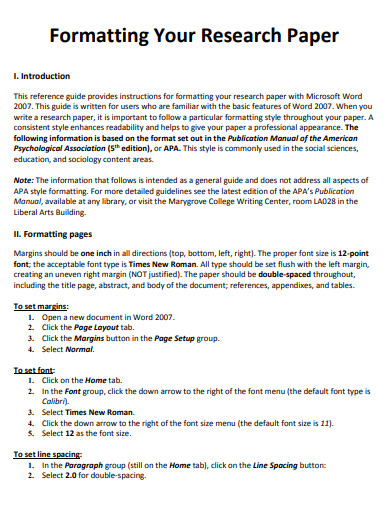
Size: 223 KB
26. Editable Research Paper Introduction
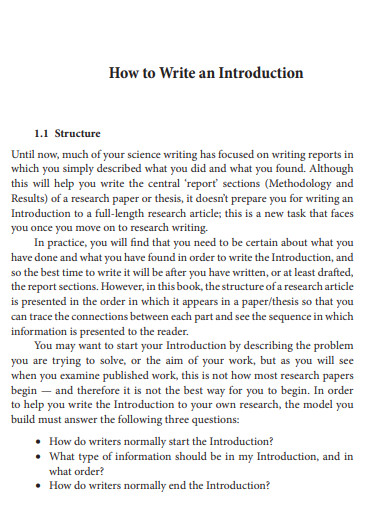
Size: 255 KB
27. Research Paper Introduction Layout
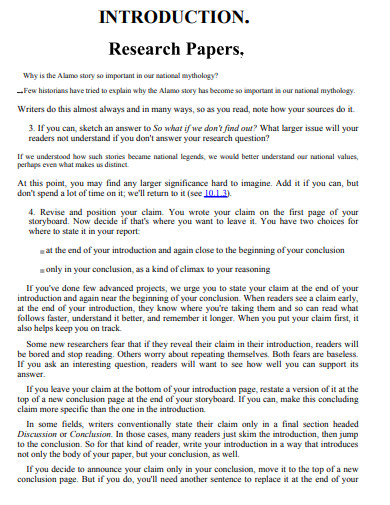
What is an Effective Research Paper Introduction
An effective research paper introduction is a concise and engaging opening section that entices readers to continue reading. It presents the research topic, outlines the objectives and purpose of the study, and highlights the relevance and significance of the research. A well-written introduction provides a clear and logical flow of information, guiding readers through the research problem, and establishing the groundwork for the subsequent sections of the paper.
How to Write an Effective Research Paper Introduction
Crafting an effective research paper introduction is crucial for capturing readers’ attention and setting the stage for your study. This guide will provide you with a step-by-step approach to master the art of writing an engaging and informative introduction. By following these guidelines, you can create a compelling opening that establishes the context, outlines objectives, and conveys the significance of your research.
Step 1: Understand the Research Paper Format:
Before diving into the introduction, familiarize yourself with the required research paper format . Depending on the discipline, you may need to follow specific guidelines such as APA format , MLA paper format , or others. Understanding the text structure and citation requirements is crucial for creating a cohesive and well-structured introduction.
Step 2: Define the Research Design:
In the introduction, briefly describe the research design employed in the study. Explain whether it is a qualitative, quantitative, or mixed methods approach. This information will help readers understand the type of data collection and analysis methods used to address the research problem.
Step 3: Craft a Research Outline:
Develop a research outline that acts as a roadmap for your study. This outline will help you organize your thoughts and ensure a logical flow of information in the introduction. Include the main sections and subsections that will be discussed in the paper, giving readers a preview of the paper’s structure.
What is the difference between APA and MLA format?
APA and MLA are two commonly used formatting styles for research papers. APA (American Psychological Association) format is typically used in the social sciences, while MLA (Modern Language Association) format is more common in the humanities. Both styles have specific guidelines for formatting citations, references, margins, fonts, and other elements. Check out our article on “ 14+ APA vs MLA Format Examples in PDF ” for more detailed comparisons.
Can you provide examples of research summary papers?
Certainly! We have a collection of research summary examples that can serve as a guide for summarizing research papers effectively. These examples demonstrate the essential components of a research summary and showcase different writing styles and approaches.
Where can I find research outline examples?
If you’re looking for research outline examples , we have a comprehensive article that provides a variety of sample outlines across different disciplines. These examples will help you structure your research paper effectively, ensuring a logical flow of ideas and information.
Writing an effective research paper introduction requires careful planning, clarity of thought, and attention to detail. By following the step-by-step guide provided here, you can create an engaging introduction that captivates readers and sets the stage for your research. Remember to adhere to the prescribed research paper format, such as APA or MLA, and utilize appropriate citations to support your claims. With a compelling introduction , your research paper will not only pique readers’ interest but also lay a solid foundation for the rest of your study.
Text prompt
- Instructive
- Professional
10 Examples of Public speaking
20 Examples of Gas lighting
Research Paper Introduction Examples

Looking for research paper introduction examples? Quotes, anecdotes, questions, examples, and broad statements—all of them can be used successfully to write an introduction for a research paper. It’s instructive to see them in action, in the hands of skilled academic writers.
Let’s begin with David M. Kennedy’s superb history, Freedom from Fear: The American People in Depression and War, 1929–1945 . Kennedy begins each chapter with a quote, followed by his text. The quote above chapter 1 shows President Hoover speaking in 1928 about America’s golden future. The text below it begins with the stock market collapse of 1929. It is a riveting account of just how wrong Hoover was. The text about the Depression is stronger because it contrasts so starkly with the optimistic quotation.
Academic Writing, Editing, Proofreading, And Problem Solving Services
Get 10% off with 24start discount code.
“We in America today are nearer the final triumph over poverty than ever before in the history of any land.”—Herbert Hoover, August 11, 1928 Like an earthquake, the stock market crash of October 1929 cracked startlingly across the United States, the herald of a crisis that was to shake the American way of life to its foundations. The events of the ensuing decade opened a fissure across the landscape of American history no less gaping than that opened by the volley on Lexington Common in April 1775 or by the bombardment of Sumter on another April four score and six years later. (adsbygoogle = window.adsbygoogle || []).push({}); The ratcheting ticker machines in the autumn of 1929 did not merely record avalanching stock prices. In time they came also to symbolize the end of an era. (David M. Kennedy, Freedom from Fear: The American People in Depression and War, 1929–1945 . New York: Oxford University Press, 1999, p. 10)
Kennedy has exciting, wrenching material to work with. John Mueller faces the exact opposite problem. In Retreat from Doomsday: The Obsolescence of Major War , he is trying to explain why Great Powers have suddenly stopped fighting each other. For centuries they made war on each other with devastating regularity, killing millions in the process. But now, Mueller thinks, they have not just paused; they have stopped permanently. He is literally trying to explain why “nothing is happening now.” That may be an exciting topic intellectually, it may have great practical significance, but “nothing happened” is not a very promising subject for an exciting opening paragraph. Mueller manages to make it exciting and, at the same time, shows why it matters so much. Here’s his opening, aptly entitled “History’s Greatest Nonevent”:
On May 15, 1984, the major countries of the developed world had managed to remain at peace with each other for the longest continuous stretch of time since the days of the Roman Empire. If a significant battle in a war had been fought on that day, the press would have bristled with it. As usual, however, a landmark crossing in the history of peace caused no stir: the most prominent story in the New York Times that day concerned the saga of a manicurist, a machinist, and a cleaning woman who had just won a big Lotto contest. This book seeks to develop an explanation for what is probably the greatest nonevent in human history. (John Mueller, Retreat from Doomsday: The Obsolescence of Major War . New York: Basic Books, 1989, p. 3)
In the space of a few sentences, Mueller sets up his puzzle and reveals its profound human significance. At the same time, he shows just how easy it is to miss this milestone in the buzz of daily events. Notice how concretely he does that. He doesn’t just say that the New York Times ignored this record setting peace. He offers telling details about what they covered instead: “a manicurist, a machinist, and a cleaning woman who had just won a big Lotto contest.” Likewise, David Kennedy immediately entangles us in concrete events: the stunning stock market crash of 1929. These are powerful openings that capture readers’ interests, establish puzzles, and launch narratives.
Sociologist James Coleman begins in a completely different way, by posing the basic questions he will study. His ambitious book, Foundations of Social Theory , develops a comprehensive theory of social life, so it is entirely appropriate for him to begin with some major questions. But he could just as easily have begun with a compelling story or anecdote. He includes many of them elsewhere in his book. His choice for the opening, though, is to state his major themes plainly and frame them as a paradox. Sociologists, he says, are interested in aggregate behavior—how people act in groups, organizations, or large numbers—yet they mostly examine individuals:
A central problem in social science is that of accounting for the function of some kind of social system. Yet in most social research, observations are not made on the system as a whole, but on some part of it. In fact, the natural unit of observation is the individual person… This has led to a widening gap between theory and research… (James S. Coleman, Foundations of Social Theory . Cambridge, MA: Harvard University Press, 1990, pp. 1–2)
After expanding on this point, Coleman explains that he will not try to remedy the problem by looking solely at groups or aggregate-level data. That’s a false solution, he says, because aggregates don’t act; individuals do. So the real problem is to show the links between individual actions and aggregate outcomes, between the micro and the macro.
The major problem for explanations of system behavior based on actions and orientations at a level below that of the system [in this case, on individual-level actions] is that of moving from the lower level to the system level. This has been called the micro-to-macro problem, and it is pervasive throughout the social sciences. (Coleman, Foundations of Social Theory , p. 6)
Explaining how to deal with this “micro-to-macro problem” is the central issue of Coleman’s book, and he announces it at the beginning.
Coleman’s theory-driven opening stands at the opposite end of the spectrum from engaging stories or anecdotes, which are designed to lure the reader into the narrative and ease the path to a more analytic treatment later in the text. Take, for example, the opening sentences of Robert L. Herbert’s sweeping study Impressionism: Art, Leisure, and Parisian Society : “When Henry Tuckerman came to Paris in 1867, one of the thousands of Americans attracted there by the huge international exposition, he was bowled over by the extraordinary changes since his previous visit twenty years before.” (Robert L. Herbert, Impressionism: Art, Leisure, and Parisian Society . New Haven, CT: Yale University Press, 1988, p. 1.) Herbert fills in the evocative details to set the stage for his analysis of the emerging Impressionist art movement and its connection to Parisian society and leisure in this period.
David Bromwich writes about Wordsworth, a poet so familiar to students of English literature that it is hard to see him afresh, before his great achievements, when he was just a young outsider starting to write. To draw us into Wordsworth’s early work, Bromwich wants us to set aside our entrenched images of the famous mature poet and see him as he was in the 1790s, as a beginning writer on the margins of society. He accomplishes this ambitious task in the opening sentences of Disowned by Memory: Wordsworth’s Poetry of the 1790s :
Wordsworth turned to poetry after the revolution to remind himself that he was still a human being. It was a curious solution, to a difficulty many would not have felt. The whole interest of his predicament is that he did feel it. Yet Wordsworth is now so established an eminence—his name so firmly fixed with readers as a moralist of self-trust emanating from complete self-security—that it may seem perverse to imagine him as a criminal seeking expiation. Still, that is a picture we get from The Borderers and, at a longer distance, from “Tintern Abbey.” (David Bromwich, Disowned by Memory: Wordsworth’s Poetry of the 1790s . Chicago: University of Chicago Press, 1998, p. 1)
That’s a wonderful opening! Look at how much Bromwich accomplishes in just a few words. He not only prepares the way for analyzing Wordsworth’s early poetry; he juxtaposes the anguished young man who wrote it to the self-confident, distinguished figure he became—the eminent man we can’t help remembering as we read his early poetry.
Let us highlight a couple of other points in this passage because they illustrate some intelligent writing choices. First, look at the odd comma in this sentence: “It was a curious solution, to a difficulty many would not have felt.” Any standard grammar book would say that comma is wrong and should be omitted. Why did Bromwich insert it? Because he’s a fine writer, thinking of his sentence rhythm and the point he wants to make. The comma does exactly what it should. It makes us pause, breaking the sentence into two parts, each with an interesting point. One is that Wordsworth felt a difficulty others would not have; the other is that he solved it in a distinctive way. It would be easy for readers to glide over this double message, so Bromwich has inserted a speed bump to slow us down. Most of the time, you should follow grammatical rules, like those about commas, but you should bend them when it serves a good purpose. That’s what the writer does here.
The second small point is the phrase “after the revolution” in the first sentence: “Wordsworth turned to poetry after the revolution to remind himself that he was still a human being.” Why doesn’t Bromwich say “after the French Revolution”? Because he has judged his book’s audience. He is writing for specialists who already know which revolution is reverberating through English life in the 1790s. It is the French Revolution, not the earlier loss of the American colonies. If Bromwich were writing for a much broader audience—say, the New York Times Book Review—he would probably insert the extra word to avoid confusion.
The message “Know your audience” applies to all writers. Don’t talk down to them by assuming they can’t get dressed in the morning. Don’t strut around showing off your book learnin’ by tossing in arcane facts and esoteric language for its own sake. Neither will win over readers.
Bromwich, Herbert, and Coleman open their works in different ways, but their choices work well for their different texts. Your task is to decide what kind of opening will work best for yours. Don’t let that happen by default, by grabbing the first idea you happen upon. Consider a couple of different ways of opening your thesis and then choose the one you prefer. Give yourself some options, think them over, then make an informed choice.
Using the Introduction to Map out Your Writing
Whether you begin with a story, puzzle, or broad statement, the next part of the research paper introduction should pose your main questions and establish your argument. This is your thesis statement—your viewpoint along with the supporting reasons and evidence. It should be articulated plainly so readers understand full well what your paper is about and what it will argue.
After that, give your readers a road map of what’s to come. That’s normally done at the end of the introductory section (or, in a book, at the end of the introductory chapter). Here’s John J. Mearsheimer presenting such a road map in The Tragedy of Great Power Politics . He not only tells us the order of upcoming chapters, he explains why he’s chosen that order and which chapters are most important:
The Plan of the Book The rest of the chapters in this book are concerned mainly with answering the six big questions about power which I identified earlier. Chapter 2, which is probably the most important chapter in the book, lays out my theory of why states compete for power and why they pursue hegemony. In Chapters 3 and 4, I define power and explain how to measure it. I do this in order to lay the groundwork for testing my theory… (John J. Mearsheimer, The Tragedy of Great Power Politics . New York: W. W. Norton, 2001, p. 27)
As this excerpt makes clear, Mearsheimer has already laid out his “six big questions” in the research paper introduction. Now he’s showing us the path ahead, the path to answering those questions.
At the end of the research paper introduction, give your readers a road map of what’s to come. Tell them what the upcoming sections will be and why they are arranged in this particular order.
Learn how to write an introduction for a research paper .
ORDER HIGH QUALITY CUSTOM PAPER

Now Available on Whatsapp
+1 (800) 685-6772
Online 24/7
50% off on custom orders. Limited time only!
Research Paper Writing Guides
Research Paper Introduction
Last updated on: Dec 17, 2024
5 Steps to Write an Excellent Research Paper Introduction - With Examples & Tips
By: Betty P.
11 min read
Reviewed By: Rylee W.
Published on: Jan 12, 2024

When it comes to research papers, an introduction is the first impression that you make on your readers, so it’s important to make it clear and engaging.
When writing a research paper , the introduction presents a unique challenge: A research paper introduction has to be more than just engaging. The main point of the introduction section is to present your research topic clearly and comprehensively. This becomes quite difficult if you don’t know what to include and how to structure it.
This blog will guide you through the process of writing an introduction for a research paper step-by-step. By following these steps, you will be able to write an introduction that sets the tone for your research paper and prepares your readers for what they will learn from it.
Let’s get into it!

On this Page
The Purpose of a Research Paper Introduction
The introduction is the first part of a research paper, where the topic is introduced, and some background and context are provided. As a writer, you need a research paper introduction that has four main goals:
- To inform your readers about the general subject of your paper and why it is important or relevant.
- To provide the necessary background information, your readers need to understand the research topic .
- To establish your research question and thesis statement, which are the main points and arguments of your paper.
- To preview the main points and structure of your paper, which are the subtopics and evidence that you are going to present.
A research paper introduction is not just a summary of your paper, but a gateway to lead your readers into your specific topic. Through the introduction, you need to equip your readers with the necessary information for them to navigate and understand your research.
Characteristics of a Good Research Paper Introduction
Here are some qualities that your research paper introduction should possess:
- It should be clear and concise, avoiding unnecessary and irrelevant details.
- It should be engaging and interesting, using a hook or a catchy opening sentence to capture the attention of readers.
- It should follow a clear and logical structure and transition from one idea to another.
- It should be relevant to the research paper title , addressing the specific purpose and scope of the paper
- It should convey the relevance or importance of the topic in light of existing research and discourse.
- It should present the writer’s own voice and original perspective on the topic.
5 Steps for Writing an Excellent Research Paper Introduction
Now that you know what a research paper introduction aims to achieve, let’s get into the steps that will help you fulfill your introduction goals effectively.
Writing your introduction step-by-step will ensure that you cover all the parts of the introduction in the research paper. These include presenting an engaging hook, providing background and context to your topic, presenting your main questions and objectives, and mentioning the structure.
Here are the steps you need to follow:
Step 1: Identify the Purpose and Scope of your Research Paper
Before you start writing your introduction, you need to have a clear idea of what your paper is about and what you want to achieve with it.
That is, before you can dive into writing, you should complete all the prewriting steps, which include:
- Defining your topic
- Craft specific research problems or questions
- Deciding the methods, techniques, and arguments that you will address in your paper.
- Finally, you should have a research paper outline , so that you can describe the structure at the end of the introduction.
Writing a good introduction will only become possible if you know your research through and through.
Step 2: Introduce the Topic with an Engaging Hook
The first step of writing a research paper introduction is to capture the attention and interest of your readers. You want to make your readers curious and motivated to read your paper.
You can do this by using a hook or a catchy opening sentence, such as a quote, a statistic, a question, a story, or a surprising fact. You can also use a rhetorical device, such as a contrast, a comparison, or a paradox, to create interest and intrigue.
Some points to keep in mind when crafting an engaging opening:
- Keep the hook strictly relevant to your topic.
- It should be directly related to the main premises of your research paper
Here’s an example of an engaging opening for a research paper:
Step 3: Provide some background information and context for your topic.
After you introduce your general subject, you need to give some background information and context for your topic.
This can include the history, significance, current state, or gaps of knowledge of your topic. The point of it is to provide the necessary and essential information readers need to know before getting into your main argument.
You should also explain why your topic is important or relevant for your field or audience. This will help the reader situate your research work within a larger academic discourse.
Let’s continue with the example above:
Step 4: Present your research question & objectives
Your research question is the central question that you want to answer in your paper. All of your subsequent arguments revolve around it and build up to answer that question. Your research question should be clear, concise, and specific.
Moreover, they should also be debatable, meaning that they can be challenged or supported by evidence.
In addition to presenting your main questions in the introduction, you should also lay out your research objectives. That is, explain what you aim to achieve through this research in concrete and quantifiable terms.
Here is an example:
Step 5: Preview the main points and structure of your paper
After you present your research question and thesis statement, you need to preview the main points and structure of your paper.
This means that you need to briefly outline the subtopics that you will cover in your research paper. You should also indicate how you will organize your paper, such as by chronological order, thematic order, or methodological order.
Let’s build upon the example from previous steps to show you how it’s done:
Research Paper Introduction Examples
Here are a few research paper introduction examples that will help put the writing steps in perspective.
First, let us put together the introduction presented above step-by-step. Here’s the complete sample introduction:
Check out these introductions as well:
Research papers introduction APA
Quantitative Research Introduction Example
Introduction for a Research Paper Sample
Craft Better Introductions With These Writing Tips
Following the steps and examples above will help you craft a strong and acceptable introduction. However, you can make it even better with the following tips.
- Create a Research Space (CARS model)
The CARS model is a framework that can help you structure your introduction, especially in STEM fields. It consists of three rhetorical steps that help you structure your introduction:
Step 1: Establish a research territory by explaining the general topic and its importance, relevance, or state of knowledge.
Step 2: Establish a niche by identifying a gap, problem, question, or challenge in the existing research on the topic.
Step 3: Occupy the niche by stating your research question, thesis statement, purpose, findings, and structure of your paper.
- Use a Funnel Approach
Start with a broad and general introduction of your topic, and then narrow it down to your specific research problem and thesis statement. This will help you to provide a clear and logical structure for your introduction.
- Tailor the Introduction According to the Type of Research
Specific parts of an introduction may vary with different types of research . For instance, in scientific research papers, you need to provide a hypothesis instead of research questions. Similarly, in some cases, you need to provide a problem statement or focus on a research problem.
Although the general structure of the introduction remains the same across various types and disciplines, remember that the content must be tailored accordingly. Always keep the conventions and standards of your particular field in mind when working on a research introduction.
- Write the Introduction at the End
Sometimes, it is easier to write the introduction after you have completed the main body and research paper conclusion .
This way, you will have a clear overview of your paper and its main arguments, and you can tailor your introduction accordingly. You can also avoid repeating or contradicting yourself, and ensure that your introduction matches the tone and style of your paper.
Alternatively, you can write a draft introduction to start your paper. However, you still need to come back and polish this introduction after completing the paper.
- Revise and Edit your Introduction
After you finish writing your introduction, check it for any errors, inconsistencies, or gaps. Make sure that your introduction is coherent, concise, and complete. You can also ask for feedback from your peers, mentors, or professional editors.
Now that you have learned how to write an effective introduction, you are all set to start! With the help of the examples and tips above, you can make your introductions stand out.
Remember, writing a good introduction can help you make a lasting impression on your readers and motivate them to read your paper. So always write it with focus and follow the steps.
If you need more help with your research paper, you can contact MyPerfectPaper.net for professional assistance.
You can buy research papers that are affordable and can help you with any aspect of your research paper. Whether you need help with choosing a topic, writing an introduction, or any other step, we have a team of expert writers to help you out.
So get professional paper writing help today!

Betty is a freelance writer and researcher. She has a Masters in literature and enjoys providing writing services to her clients. Betty is an avid reader and loves learning new things. She has provided writing services to clients from all academic levels and related academic fields.
Was This Blog Helpful?
Keep reading.
- The Ultimate Research Paper Topics List: 350+ Ideas

- Research Paper Outline: Guide with Samples & Templates
-14410.jpg)
- Interesting Sociology Research Topics - 200+ Ideas

- How to Write an Abstract: A Step-by-Step Guide with Examples

- Quantitative Research Guide: Purpose, Types, and Examples

- Qualitative Research | Learn Types, Methods, Techniques & Examples

- A Complete Guide to the Different Types of Research

- Writing an Effective Title for Your Research Paper - A Simple Guide

- 7 Steps for Starting a Research Paper Effectively

- How to Write a Research Paper - Steps, Tips & Examples
-13527.jpg)
- Craft a Compelling Research Paper Conclusion in 4 Easy Steps

- How to Write an Abstract for a Research Paper

Stuck With Assignments?
Get your paper done within 6 hours, with FREE and UNLIMITED revisions!
People Also Read
- Services Assignment Writing
© 2024 - All rights reserved

Examples of Writing A Research Paper Introduction

- X (Twitter)
Last updated on December 12th, 2024 at 11:32 am
Struggling to write a powerful research paper introduction? This guide offers a treasure trove of examples to inspire you.
Learn how to grab your reader’s attention, provide essential context, and clearly outline your research goals.
Remember, a compelling research paper introduction is like a handshake—it sets the first impression and establishes the tone for your entire work.
By following these diverse examples and practical strategies, you can compose an introduction that not only captivates your reader but also increases your chances of your research paper being read more often.
Think of your research paper introduction as a captivating trailer for a movie. You want to pique the audience’s interest and leave them wanting more.
Why is a strong introduction crucial?
Even though the title and abstract appear first, the introduction delves deeper, highlighting the significance and key features of your research paper , as it introduces your reader to a potentially unfamiliar subject and sets the tone for the entire paper.
A strong introduction grabs the reader’s attention, arouses their interest, and clearly outlines the significance of your research.
Here’s how to write an introduction that entices your reader to dig deeper:
Start with a Bang!: Examples
Don’t start with dry background information. Instead, use a captivating “hook” to grab the reader’s attention. Here are some examples:
1. Intriguing Question: Pose a thought-provoking question directly related to your research topic.
Example (Social Sciences):
“Has social media become a breeding ground for misinformation?”
2. Startling Statistic: Use a compelling statistic that highlights the importance of your research.
Statistic Example:
“Did you know that nearly 80% of the world’s oceans remain unexplored?”
3. Relatable Anecdote: Share a personal experience or a relevant story to connect with your reader on a human level.
Example of an Anecdote:
“The frustration of navigating endless customer service menus inspired my research on improving communication channels.”
4. Fascinating Quote: Use a powerful quotation from an expert in your field to set the stage for your research.
“As Albert Einstein said, ‘The important thing is not to stop questioning. Curiosity has its reason for existing.'”
Remember: Choose a hook that is relevant to your research topic and sets the tone for your paper.
These research paper introductions examples make sense, right?
Don’t you think they will grab reader’s attention and hook them to dig deeper into your research?
Besides, an example will set the stage and lay the groundwork for your research by providing context and background information to guide the reader through your research journey, clarifying the topic, and eliminating ambiguity.
On the other hand, a poor introduction can leave your reader confused and uninterested.
Composing a Strong Research Paper Introduction
Once you’ve hooked your reader, provide some background information to establish context. Every research paper is unique, so your introduction should be too. Here are some key elements to implement:
1. Start broad, then narrow: Begin with a general overview of your research topic. Gradually narrow your focus to address the specific area you’re investigating.
2. Outline Your Goals: Clearly state the objective of your research and the anticipated benefits it will bring. Briefly explain the structure of your paper and the methods you’ll use to present your findings.
3. Highlight the significance: Explain why you chose this research topic and how it contributes to existing knowledge in your field. A strong rationale keeps the reader engaged.
4. Contextualize Your Research: Mention relevant previous research, both recent and historical. This demonstrates your familiarity with the field and positions your work within the existing body of knowledge.
5. Focus on Gaps : Briefly mention the main research gap your work addresses. This showcases the value and novelty of your research.
5. Challenges: If a specific challenge you overcame is directly related to the gap you’re addressing, you can very briefly mention it. This can demonstrate your perseverance and expertise.
Tips for Writing an Effective Introduction
Don’t underestimate the importance of creating a powerful introduction. Here are some additional tips to keep in mind:
1. While it might seem logical to start with the introduction, it’s often easier to write it after completing the rest of your paper.
This ensures a clearer picture of your research, allowing you to craft a truly optimized introduction.
2. Research papers can be complex and lengthy. Use impactful sentences to convey your message concisely.
Avoid dramatizing your study or using overly technical language.
3. Ensure impeccable grammar, spelling, punctuation, and syntax.
Consider using a tool like Grammarly to catch errors and offer suggestions for improving the content.
4. Read your introduction aloud to identify awkward phrases or unclear sentences.
5. Subtly address questions your reader might have, such as the research gap, limitations, and contributions of your study.
6. Compose a thesis statement (Optional, depending on the field)
For many research papers, a strong thesis statement is a valuable addition. It summarizes your research question and your key findings in a clear and concise sentence.
Here’s an example:
“T his study investigates the impact of social media on mental health in young adults and proposes strategies for promoting responsible online behavior.”
Remember: Not all fields require an explicit thesis statement in the introduction. If you’re unsure, consult your professor or style guide.
FAQ’s about research paper introductions
What should my research paper introduction include.
It must include a thesis statement, a relevant hook, the subject area or niche, the problem being addressed, a brief background of existing research in the discipline, the shortcomings if any, the methodical solutions being adopted, and the outcome.
How long should the introduction section be?
The length of an introduction will depend on the research study. Generally, scientific papers are longer than those in the humanities/social sciences, psychology, or business-related categories. It can be safely assumed that the length of their introductions will follow suit.
A well-composed introduction is like a captivating trailer for a movie. It sharpens the reader’s appetite and promises a rewarding experience. By following the examples outlined above, you can ensure your research paper starts strong and leaves a lasting impression.
Surely, you don’t want all your hard work to be overlooked on account of a lackluster introduction. Make it count!

My journey in academia began as a dedicated researcher, specializing in the fascinating world of biochemistry. Over the years, I’ve had the privilege of mentoring Master’s and PhD students, collaborating on research papers that pushed the boundaries of knowledge. Now, post-retirement, I’ve embarked on a new chapter, sharing my academic expertise through freelance work on platforms like YouTube and Upwork. Here, I investigate the finer points of scholarly research, guiding aspiring writers through the intricacies of formatting, composing compelling narratives, and navigating the publication process.
You May Also Like
How to write an introduction for a research paper.

12 Essential Parts of Introduction in Research


COMMENTS
Jul 20, 2023 · The research paper introduction section, along with the Title and Abstract, can be considered the face of any research paper. The following article is intended to guide you in organizing and writing the research paper introduction for a quality academic article or dissertation. The research paper introduction aims to present the topic to the ...
Sep 24, 2022 · Research paper introduction examples. Full examples of research paper introductions are shown in the tabs below: one for an argumentative paper, the other for an ...
Mar 26, 2024 · Research Paper Introduction. The introduction of a research paper serves as the first impression and sets the stage for the rest of the study. It provides background information, introduces the research topic, establishes the purpose of the paper, and guides readers toward the research question or thesis statement.
This paper looks at the relationship between physical activity and depression. Problem: This introduction does not specify what aspect of the relationship between physical activity and depression has not been studied, failing to highlight the unique contribution of the research. Example of Identifying the Research Gap:
Apr 12, 2024 · An introduction is a paragraph that provides information about your entire paper and aims to attract and inform the reader. Before writing an introduction or even starting your paper, you need to research academic sources. The first one or two sentences of an introduction paragraph should be a hook to attract the reader's attention.
The five parts of introductions. According to John W. Creswell, the five components of a good introduction are the following: “(a) establishing the problem leading to the study, (b) reviewing the literature about the problem, (c) identifying deficiencies in the literature about the problem, (d) targeting an audience and noting the significance of the problem for this audience, and (e ...
Jul 24, 2024 · Learn how to write an effective research paper introduction that captivates readers and sets the stage for your study. This step-by-step guide provides essential tips for crafting an engaging opening, outlining objectives, and conveying the significance of your research. Master the art of introductions and create compelling research papers.
Research Paper Introduction Examples Quotes, anecdotes, questions, examples, and broad statements—all of them can be used successfully to write an introduction for a research paper. It’s instructive to see them in action, in the hands of skilled academic writers.
Jan 12, 2024 · When it comes to research papers, an introduction is the first impression that you make on your readers, so it’s important to make it clear and engaging. When writing a research paper, the introduction presents a unique challenge: A research paper introduction has to be more than just engaging. The main point of the introduction section is to ...
Nov 12, 2024 · Composing a Strong Research Paper Introduction. Once you’ve hooked your reader, provide some background information to establish context. Every research paper is unique, so your introduction should be too. Here are some key elements to implement: 1. Start broad, then narrow: Begin with a general overview of your research topic. Gradually ...